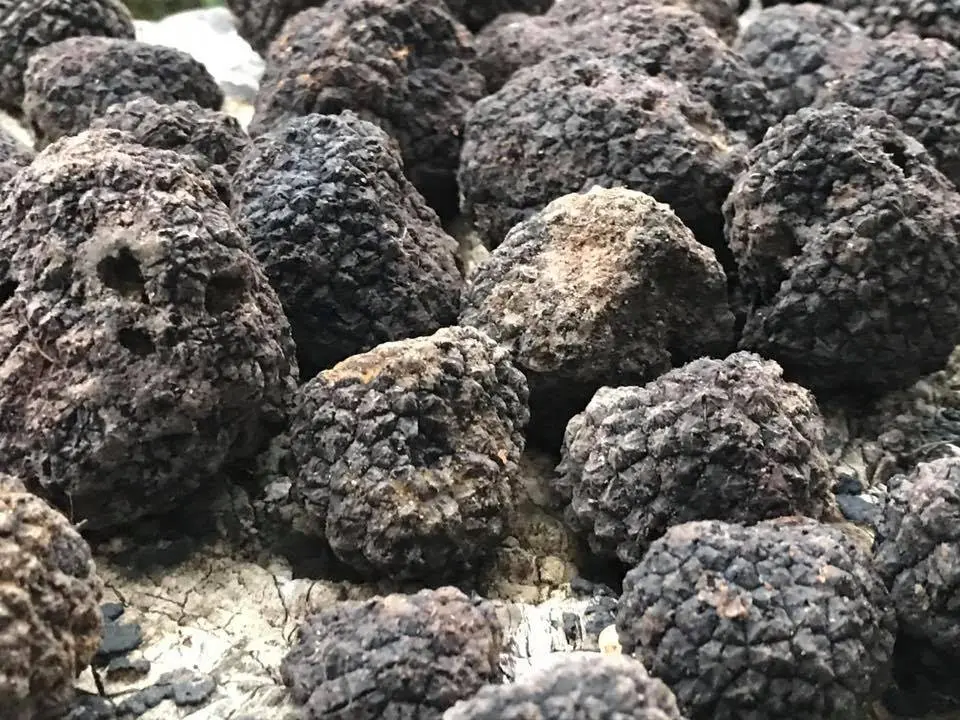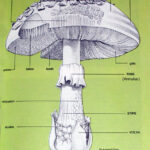In the UK, truffles were relatively unknown amongst the public before the 18th century but as history recalls they have had extensive use ever since. It started in 1728, as the excitement abroad mounted, the head of Botany at Cambridge University went in search of his own truffles and recorded finds of various species from Surrey, Middlesex, Kent, Essex, Herefordshire and Northamptonshire. Further records show that truffle hunting was practiced here in the UK over the last two centuries and it carried a royal warrant for a family business in Wiltshire up until the 1930’s, run by a man called Alfred Collins, one of the last truffle hunters in the UK since foraging died out before the second world war. Alfred Collins worked in the Winterslow area of Wiltshire and the Savernake Forest, which has a long history of truffle presence and then continued to successfully hunt truffles across Great Britain, covering over eight counties and on a good day foraging he often returned with 25 lbs of truffle.
Truffles have been recorded in Patching Wood near Clapham in West Sussex an area that was famously rumored for truffles and a mysterious local woman who would successfully hunt them in secret. Further historical evidence is within the truffle archive at the Royal Botanical Gardens in Kew with records of truffle finds in Brighton, Goring and Patching.
It has taken a period of nearly eighty years for the subject of truffles to have arisen again in the UK; however they have been recently documented in press publications and on the television, highlighting their existence, new finds and cultivation potential.
Tuber aestivum are native truffles found in the UK that are cultivated commercially abroad to supply the demand for a desirable luxury, providing high class restaurants with quality produce equivalent to caviar or fois gras. This truffle is found growing naturally in several areas of the UK, if it was possible to organize its sustainable cultivation and collection it would contribute to prosperous economic growth for local areas and supply the increasing demand. Although Tuber aestivum is considered inferior in quality and value compared to Tuber melanosporum and Tuber magnatum it is still recognised for its gastronomical value and cultivation potential.
Some truffle species found naturally in the UK
- Tuber aestivum
- Tuber borchii
- Tuber brumale
- Tuber macrosporum
- Tuber maculatum
- Tuber rufum
- Tuber excavatum
- Tuber mesentericum
It is vital to understand the life cycle of Tuber aestivum and its relationship with trees, its necessary to consider that they are hypogenous ascomeceytes fungi that live within a specific community, a fundamental niche compromising of ectomycorhizzal symbiotic relationships with trees and shrubs, this is a mutualistic relationship. It is an obligate relationship for the truffle as it cannot exist without the host tree and generally a facultative relationship for the tree, except for oak and beech that do require some species of mycorhizzal presence to exit; this association increases the trees capability to absorb water. fixed nitrates, mineral irons, particularly phosphorous and potassium and in return the tubers receive carbohydrates , in the form of sugars and starches which they need to grow as they cannot photosynthesize. Where trees are present within soils of low nutrient content this association allows the trees to be in a competitive position whilst communicating and associating with other indicator species of plants and trees.
T aestivum smells much milder and more delicate than the French Tuber melanosporum or the Italian Tuber magnatum. Tuber mesentericum smells strong and is considered a good truffle to eat in Italy although it is preferred cooked as it can be overwhelmingly powerful similar to carbolic soap. It is essential not to eat any truffles without a professional diagnosis as some can cause quite unpleasant tummy complaints if incorrectly identified and eaten. Tuber borchi is also considered a good edible and Tuber brumale is found here in winter also considered edible but tastes of tar. Tuber macrosporum is considered to have a very good flavour too, choice!
Host trees for Tuber aestivum
| Common name | Latin name |
| Beech | Fagus sylvatica |
| Birch | Betula |
| Cedars | Cedrus |
| English oak | Quercus robur |
| Fir | Abies |
| Hazel | Corylus avellana |
| Holly oak | Quercus ilex |
| Hornbeam | Carpinus betulus |
| Lime trees | Tilia |
| Pines | Pinus |
| Poplars | Poplus sp |
| Spruces | Picea |
Soil
Tuber aestivum will tolerate a greater variety of soils, preferring free draining soils but ranging from chalk or limestone calcareous, rendzina types or heavy clay base types to light sandy or loamy textures .It is able to grow in rich soils, however calcium is necessary. Hence the South Downs provide a limited but perfect environment for this wonderful truffle of our own, where woodlands remain it is still possible to find these black diamonds.
Climate
Tuber aestivum requires an oceanic, semi continental or continental climate with enough rain in summer and not too much low temperature in autumn because of this it has a large distribution over Europe. It is native in 26 out of 27 European countries and it is thought to have a broad tolerance to the heat, cold and water also more resistant to short spells of temperatures below freezing. Altitude seems to play a role in their presence and they are generally found in higher grounds ranging from 100 – 1000 ft above sea level. All personal finds have been at approximately 200ft and on ley lines, don’t know what to think about that but certainly interesting ! I will have to investigate further and maybe get the dowsing rods out!
Bibliography
- Hall, Ian R., et al. “Taming the Truffle: The History, Lore, and Science of the Ultimate Mushroom.” Timber Press, 2008.
- A comprehensive guide covering the history, cultivation, and science of truffles, with a focus on European species.
- Trappe, James M., et al. “Field Guide to North American Truffles: Hunting, Identifying, and Enjoying the World’s Most Prized Fungi.” Ten Speed Press, 2007.
- Although focused on North American truffles, this field guide provides valuable insights into foraging techniques and the ecological roles of truffles.
- Pacioni, Giovanni. “Truffles.” Nature and Science of Autumn, 1991.
- A book that delves into the natural history and science of truffles, including species found in the UK.



